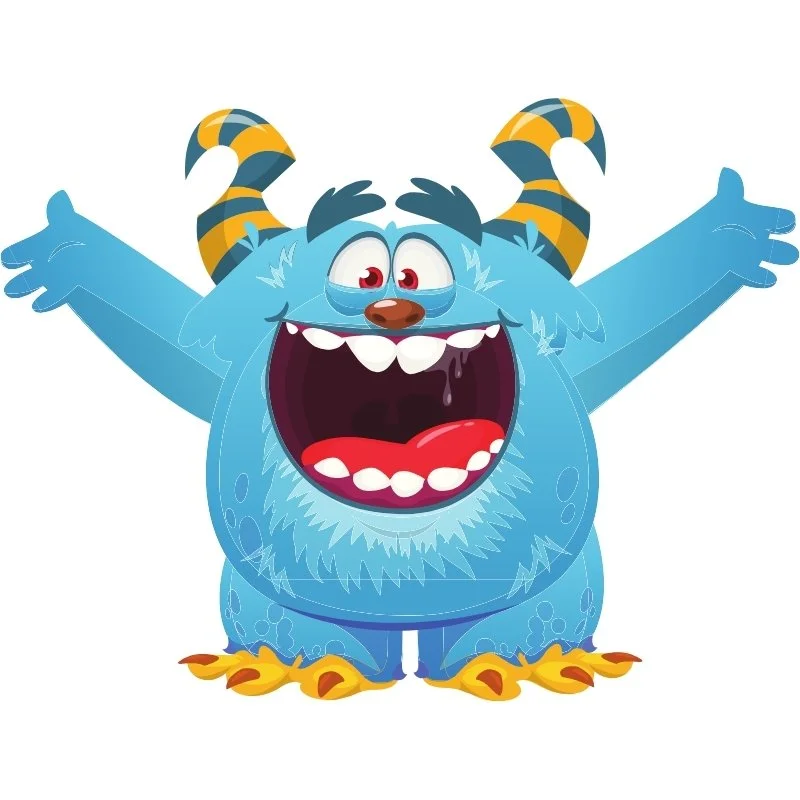Cradle – The Over-Nurturing and Smothering Monster
Cradle is one of the Visiting Neuro Monsters. Cradle represents the urge to over-nurture, to care so much that it crosses into smothering or overprotection. Known as the Over-Nurturing and Smothering Monster, Cradle embodies the instinct to hold on too tightly, to overcompensate for fear of loss, and to give until boundaries blur. Within the Neuro Monsters Universe, Cradle reveals how the desire to protect and comfort can become overwhelming, stifling independence and creating cycles of dependency or resentment.
The Symbolic Role of Cradle
Cradle symbolizes the too-tight embrace that protects but also constrains. Its presence shows up when you hover anxiously over loved ones, when you give care in ways that prevent others from learning autonomy, or when your nurturing becomes overbearing rather than supportive. Symbolically, Cradle represents the instinct to equate closeness with safety, even when that closeness creates suffocation. By naming Cradle you begin to recognize when nurturing is guided by fear rather than trust.
Cradle often appears as a large, soft figure with long arms that wrap around others in layers of cushions and blankets. Its warmth is undeniable, but its grip can feel suffocating. Facing Cradle with emotional neutrality allows you to see that its embrace is both comfort and cage, a reminder that nurturing requires balance.
Over-Nurturing and Smothering in the Brain
In neuroscience terms Cradle is tied to the oxytocin system, the amygdala, and the prefrontal cortex. Oxytocin drives bonding and caregiving, creating the urge to hold others close. The amygdala heightens fear of separation or harm, fueling protective overreach. The prefrontal cortex overengages in planning, scanning for risks, and trying to anticipate every possible need.
Cradle symbolizes this loop where care circuits combine with fear and over-control, producing behaviors that blur the line between comfort and constraint. The brain treats closeness as the only safe option, reinforcing the smothering instinct.
The Protective Instinct Behind Cradle
Although it can feel overbearing, Cradle’s instinct is protective. Over-nurturing is the nervous system’s way of ensuring safety, connection, and survival by preventing risk or loss. The purpose is to shield loved ones and guarantee belonging. The challenge is that Cradle does not allow space for independence, autonomy, or healthy distance. By seeing the protective purpose behind Cradle you can begin to balance care with trust, letting closeness coexist with freedom.
Training with Cradle
Training with Cradle means learning how to nurture without smothering and how to balance protection with respect for autonomy. Cognitive Neuro Therapy emphasizes naming over-nurturing neutrally and practicing boundaries that allow care to breathe.
When Cradle appears you can practice the following steps. Pause and acknowledge the urge to hold on tightly. Name it as over-nurturing rather than as necessary. Take one slow breath and ask whether the act of care supports independence or stifles it. Practice giving space in small ways, such as allowing others to solve their own problems or stepping back after offering support. Trust that letting go can strengthen bonds rather than weaken them.
Over time Cradle begins to soften not by disappearing but by being balanced. You learn that nurturing is most powerful when it includes both comfort and respect for autonomy. By approaching Cradle with compassion, you transform smothering into steady care. Cradle becomes a reminder that love is strongest when it holds without trapping, when it offers safety without taking away freedom.


